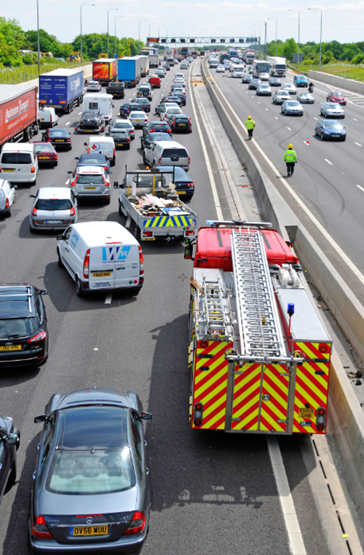 Read the peer reviews on this feature
Read the peer reviews on this feature
Five! Pick any day - the day I sat down to write this, or the day you read it. Five is the number of people who left home in the morning and did not return. They died in road accidents.
It is, of course, an average figure, but it is still a sobering one. The number of people killed on our roads in 2015 was 1,732… 54 of them children. Often we never even know their names. They slip through the cracks of our lives, their deaths perhaps not even reported in the local press. Yet their loss ripples outwards - an empty desk at school or work, or a loved one gone.
To be crude but frank, the loss is also financial. From the accident scene and the resulting congestion, to the work of the emergency services and hospital doctors, and finally the investigation and possible prosecution. The Department for Transport estimates the value to the UK economy of preventing these deaths is more than £16 billion every year. Each is thought to cost £1.8m. And beyond the death toll, official statistics suggest 22,000 people were seriously injured in 2015, and 162,000 were slightly injured. Both of those latter categories are of course somewhat subjective though. Lives are changed forever in accidents, long after doctors and the physical healing process have done their work.
By contrast, in the 2015-16 period no one died as a result of a train accident - for the ninth consecutive year. The number of fatal accidents involving the rail workforce also declined to zero, for the first time since records began at the turn of the century, although for the sake of balance there were still a handful of passenger fatalities (mostly at the platform edge - but not related to boarding or alighting), three pedestrians killed at level crossings, and almost 300 suicides or suspected suicides.
To be very clear, this is not some deeply inappropriate point-scoring exercise. A rail safety record which is globally admired is only earned and sustained by hard work and by lesson learning.
For example, towards the end of 2016, the deaths of seven passengers on the Croydon Tram network was a shocking reminder that good records can be undone in a moment. It was significant enough in the national psyche that the names and photographs of the victims shared the front pages of national newspapers with the election of an American President.
Yet in the past few years, the steady decrease in road fatalities has slowed. Between 2005 and 2010 the number practically halved. Now, the DfT acknowledges in statistical terms it has remained unchanged since 2011. The lack of outcry from society might imply we have accepted the risks of personal motoring. Yet the devastation to lives and the financial cost continues.
Professor Richard Allsop is an Emeritus Professor of Transport Studies at University College London. He has worked on aspects of transport policy research since the 1960s.
“The roads have never been a free-for-all,” he says. “When motor vehicles first arrived, if you wanted to drive a car you had to have a man walking in front of you with a red flag. There have always been elements of regulation, which have progressively become more complex over the years.
“As motorisation increased in the post-war period, the number of deaths on the road went up until 1966, when it reached effectively 8,000 people. The introduction of the breathalyser in 1967 had a marked effect. By the early 1970s the number of deaths per year was on a downward trend. It is now around 1,800 a year, and that is in the context of traffic having multiplied five times since 1967.”
Allsop describes himself as a constructive critic of Vision Zero, a global campaign to eliminate all road injuries. It began in 1997 in Sweden, and has been taken up by some British cities and towns. “People make mistakes,” says the Vision Zero website. “Vision Zero supporters say policies must aim to protect them from fatal errors on roads.”
“Some people believe in total elimination in death and injury,” continues the professor. “As a scientist I know, we don’t know how to achieve that. My suspicion is it won’t be achievable. The concept has done tremendous good, and I’m sure it has accelerated the rate of reduction of deaths on the road, but I don’t buy it.
“I don’t find it credible, with any kind of automation or any kind of improvement in behaviour - when you have 65 million people and 40 million motor vehicles circulating in a reasonably free society in a country where the amount of space available is what we have - that you can eliminate accidental death from the road system. But with determination we should be able to reduce it by a factor of (say) something like four from where we are now.”
Allsop argues a case for reintroduction of national targets motivating effort at local authority levels. “Until May 2010 we had a positive allocation of money and positive requirements on local authorities to have a plan in place for their next steps in reducing death and serious injuries on the road. All of that was dismantled in the summer of 2010. The Coalition Government was confident the numbers would keep coming down, but in fact the decrease ceased and the number of deaths has levelled off - there are some local authorities where there are no specialist staff and no budget for explicit road safety work.”











